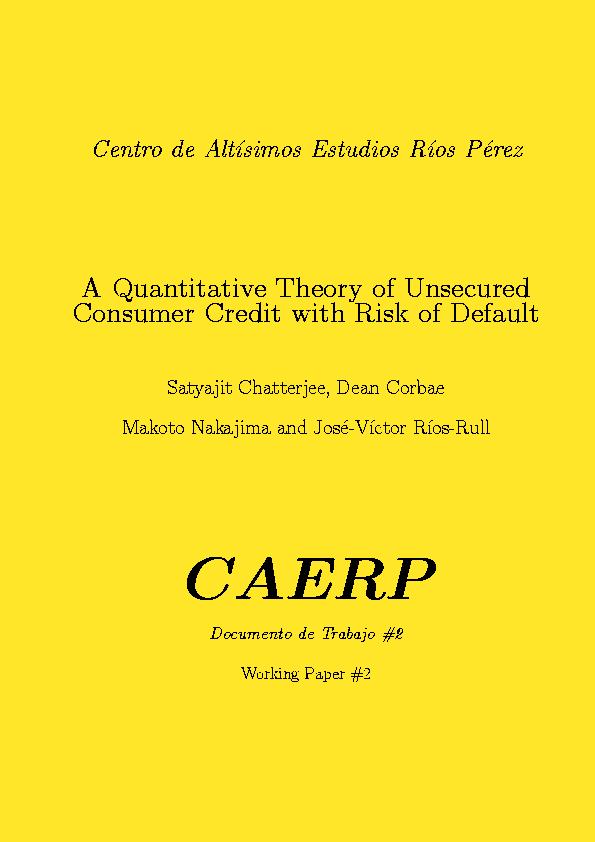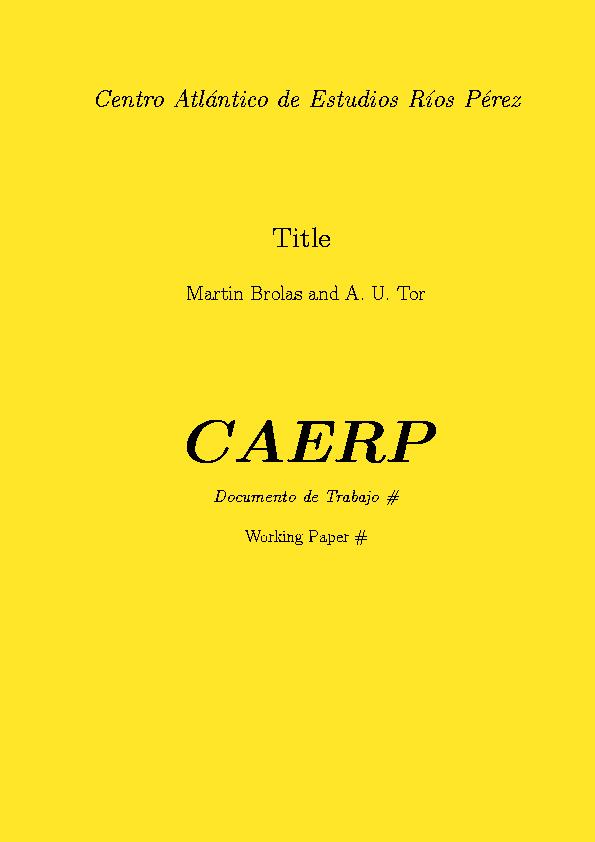
|
Documento de trabajo #17, 2004 |
All around the world, developed countries have resorted to parametric reforms of their Social Security systems, in an attempt to lessen the impact of the population aging. In this paper we explore the capacity of these reforms to alleviate the expected financial difficulties of current PAYG systems. This is accomplished by developing a Heterogeneous Agents, Applied General Equilibrium model where individuals can freely adjust their retirement ages in response to the incentives provided by the pension regulations. We find that the calibrated model successfully reproduces the basic stylized facts of retirement behavior in Spain. In particular, it mimics the early retirement pattern of low income workers under the effects of minimum pensions. The model is then used to explore the effects of several changes in pension formula, including the reform actually implemented in 1997. The general conclusion is that parametric changes can significantly improve the financial condition of the system, but are not enough to fully restore it. |
||||||||||||||||||||||||||||||||||||||||||

|
Documento de trabajo #16, 2003 |
This paper asks what explains the reduction in the college attainment gender gap in the U.S. over the last decades. The fraction of males attending college relative to females has decreased from 1.57 in the mid seventies to 1.19 at the beginning of the nineties. We use a model where parents make decisions on daughters and sons' education taking into account the e®ect of education on earnings, marriage opportunities, fertility and home production. The main ¯finding is that observed changes in earnings and fertility can account for a fair amount of the decrease in the sex college attainment ratio, however observed changes in marital status and marital sorting imply a decrease in college attainment of women. |
||||||||||||||||||||||||||||||||||||||||||

|
Documento de trabajo #15, 2003 |
In this paper, we study the optimal choice of public expenditures when there is no way of committing to future policy and ``reputational'' mechanisms are not operative. This amounts to confining our attention to Markov equilibria. The environment is a neoclassical growth model where consumers derive utility from a public good. This environment gives rise to a dynamic game between successive governments and the private sector and this game is made interesting by the presence of a state variable: the capital stock. We characterize equilibria in terms of an intertemporal first--order condition (a ``generalized Euler equation'', GEE) for the government and we use this condition both to gain insight into the nature of the equilibrium and as a basis for computation. The GEE reveals how the government optimally trades off tax wedges over time. It also allows us to discuss in what sense a current government may be strategically influencing future governments in their taxation decisions. For a calibrated economy, we find that when the tax base available to the government is capital income---an inelastic source of funds at any moment in time---the government still refrains from taxing at high rates in order to smooth distortions over time. As a result, the economy is far from the mix of public and private goods that would be optimal in a static context; in return, the savings distortion is not very severe and the capital stock is quite high.
|

|
Documento de trabajo #14, 2003
| The present paper studies resource allocation in an expanding product variety framework a la Romer (1990). We consider the limiting case where net returns to specialization are zero and, therefore, R&D is completely useless, socially. Nevertheless, the market equilibrium involves allocation of resources to R&D, and this wasteful allocation may take place even in a steady state.
|

|
Documento de trabajo #13, 2003
| This paper presents an endogenous growth model with R&D in order to jointly explain the productivity slowdown and the rising wage inequality suffered by developed Wold during the last three decades. An increase in technological complexity makes new technology more intensive in skilled labor, rising the demand for this factor and its wage. This increment in skill wage reduces the demand for new technologies, which are more intensive in skilled labor, inhibiting R&D and technological change.
|

|
Documento de trabajo #12, 2003
| This paper quantifies the size of precautionary savings implied by a dynamic general equilibrium model with heterogeneous agents when explicitly considering the labor supply decision of households. Key parameters as the intertemporal elasticities of substitution of consumption and leisure are obtained from observed household behavior by calibrating the model to reproduce in equilibrium relevant statistics from micro data. I ¯nd that precautionary savings are smaller than if they were measured by use of a model economy without labor decision and that they can even be negative. In addition, the incomplete markets economy is smaller in size than its complete markets counterparts. That is to say, aggregate output is smaller, between 82% and 94% of aggregate output in the complete markets economies. These result are in stark contrast to the ones implied by models without labor choice as Aiyagari (1994) and are due to the importance of hours as a mechanism to confront wage fluctuations.
|
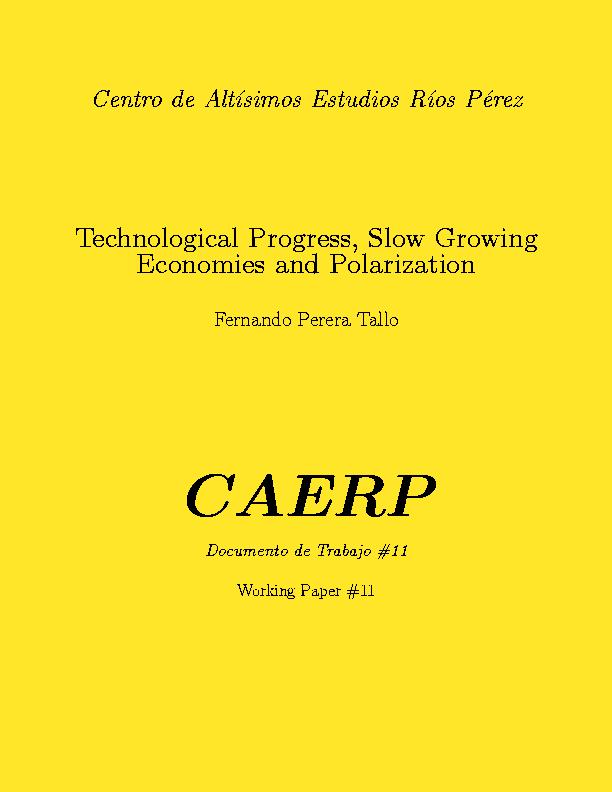
|
Documento de trabajo #11, 2003
|
Slow technological progress and financial sectors with low productivity are endemic among developing countries. This paper presents a model in which technological progress a.ects the productivity of the financial sector. When the technological progress is fast, the financial intermediation costs are low and this increases the incentives to invest in new technology. This feed back process involves the existence of two types of balanced growth path equilibria: one in which the productivity of the financial sector is high and the technological progress fast, and other in which the productivity of the financial sector is low and the technological progress slow. It also may appear an steady state in which there is neither financial sector nor technological progress. Multiple equilibria and indeterminacy of equilibria may arise: for given initial conditions, there are several equilibrium paths converging to di.erent balanced growth paths with di.erent growth rates.
|
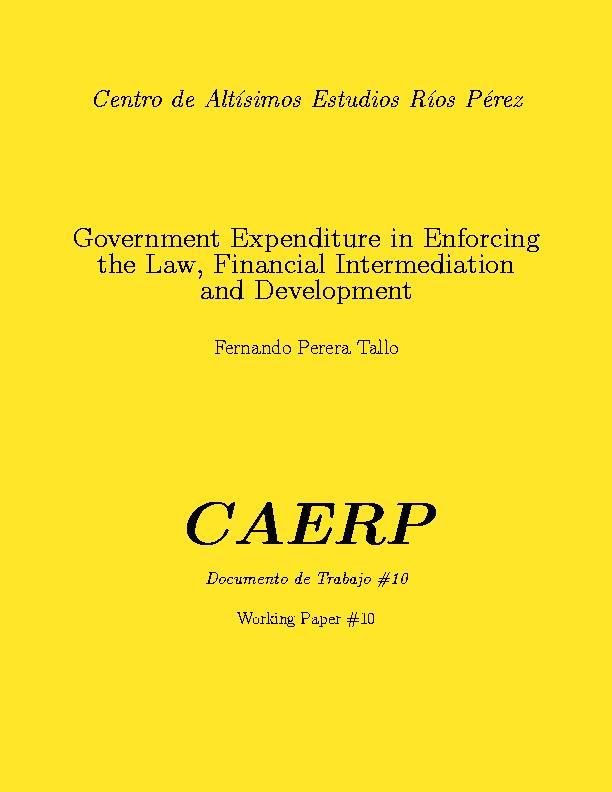
|
Documento de trabajo #10, 2003
|
This paper presents a neoclassical growth model with financial intermediation in which government expenditure is used to enforce the law. Government expenditure increases the probability that the financial contract are enforced and reduces financial intermediation costs. There is a feed back process: low per capita capital involves low government expenditure and low probability of enforcing financial contracts, which reduces the incentives to accumulate capital. As a consequence of this feed back process there are three steady states: one without financial intermediation and low per capita capital, another with low probability of enforcing the financial contract and medium per capita capital and other with high probability of enforcing the contract and high per capita capital. The dynamic around the steady state with low enforcing probability is characterized by multiple equilibria and cyclical behavior, the dynamics around the two others steady states presents the typical saddle point dynamics.
|
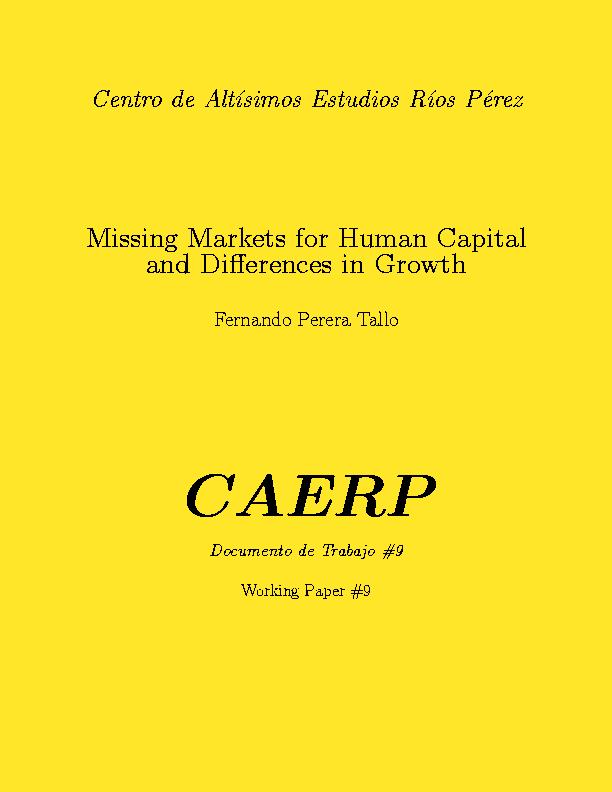
|
Documento de trabajo #9, 2003
|
There are some empirical facts that growth models usually cannot explain: i) the di.erences in consumption growth rates across countries when international capital markets are considered, ii) the low growth and low levels of education in developing countries where the return on education is very high. This paper introduces a generational structure that implies that the return on human capital is higher than the return on physical capital and that consumption growth rates vary across countries when international capital markets are included. The human capital technology of the paper implies that poor countries grow more slowly and invest a smaller share of income on education, in spite of an extraordinarily high return on education and the existence of international capital markets.
|
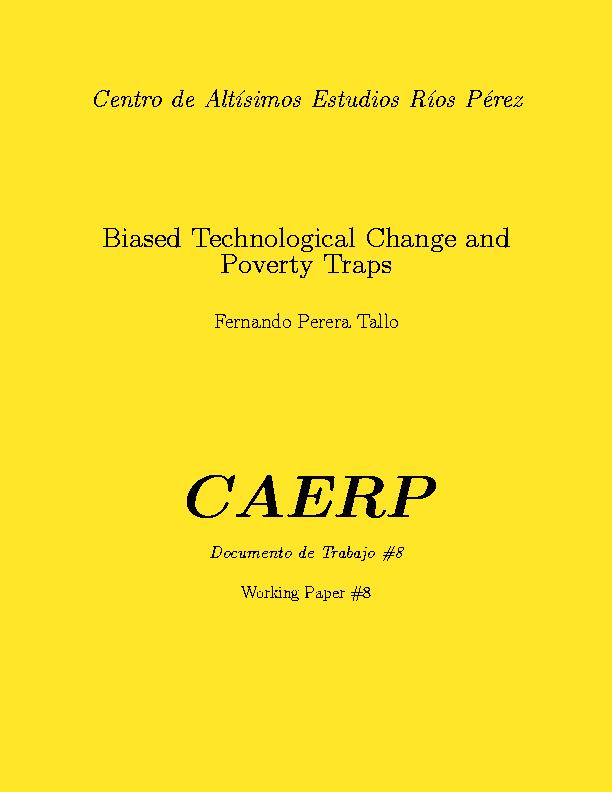
|
Documento de trabajo #8, 2003
|
This paper presents a model in which technological change increases the share of reproducible factors at the expense of nonreproducible ones. When reproducible factors are abundant, firms have incentives to adopt technologies that are intensive in such resources, and this increases the incentives to invest more in them. This feedback process may generate growth or also stagnation: when reproducible factors are not abundant, firms do not have incentives to adopt technologies intensive in those resources and technological change does not take place. The paper also analyzes how biased technological change a.ects interpersonal distribution of income: nonreproducible factors are more equally distributed than reproducible ones, thus biased technological change increases inequality.
|
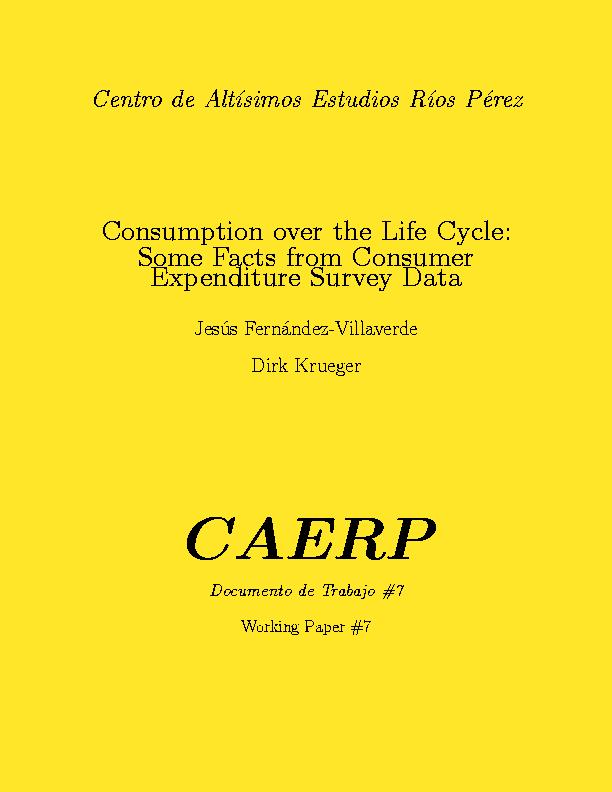
|
Documento de trabajo #7, 2003
|
This paper uses a seminonparametric model and Consumer Expenditure Survey data to estimate life cycle profiles of consumption, controlling for demographics, cohort and time effects. In addition to documenting profiles for total and nondurable consumption, we devote special attention to the age expenditure pattern for consumer durables. We find hump-shaped paths over the life cycle for total, for nondurable and for durable expenditures. Changes in household size account for roughly half of these humps. The other half remains unaccounted for by the standard complete markets life cycle model. Our results imply that households do not smooth consumption over their lifetimes. This is especially true for services from consumer durables. Bootstrap simulations suggest that our empirical estimates are tight and sensitivity analysis indicates that the computed profiles are robust to a large number of di.erent specifications.
|
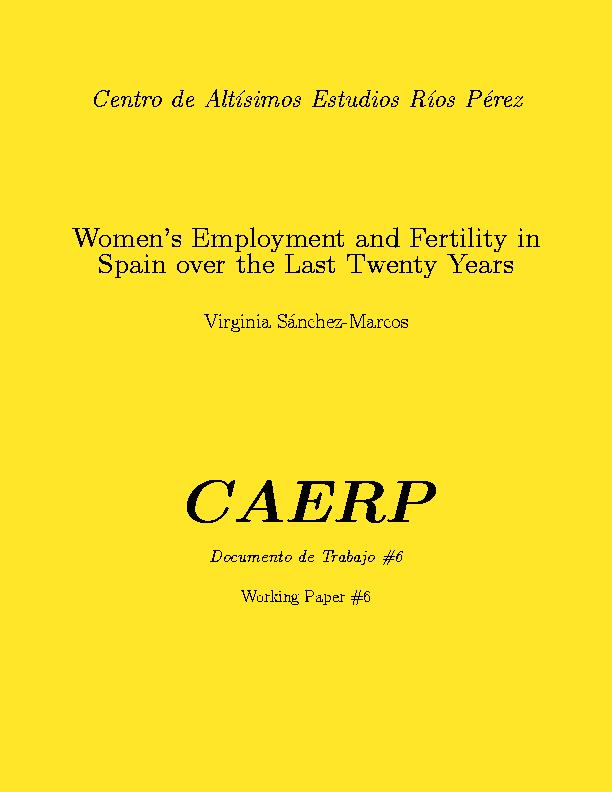
|
Documento de trabajo #6, 2003
|
Over the past twenty years there has been a 87% increase of the married women's employment rate and a 48% decrease of the fertility rate in Spain. This paper focus on the increase of the marital dissolution rate, following the introduction of the Divorce Law at the beginning of the eighties, as a possible explanation (the probability of divorce went from 0.5% to 2.1%). A model on the economics of the family, in which labor market and fertility decisions are made, is used to measure such e.ects. It is found that the increase of divorce risk explains 15%, 44% or 0% of the change in married women's full-time employment rate, depending on women's education, and 45% of the decrease of the fertility rate. So, contrary to what some people argue, the decrease of the fertility rate observed in Spain is not so closely related to the increase of women attachment to the labor market, there are other possible explanations. The model provides a good framework for the evaluation of certain social policies that target the reconciliation of family and labor life.
|
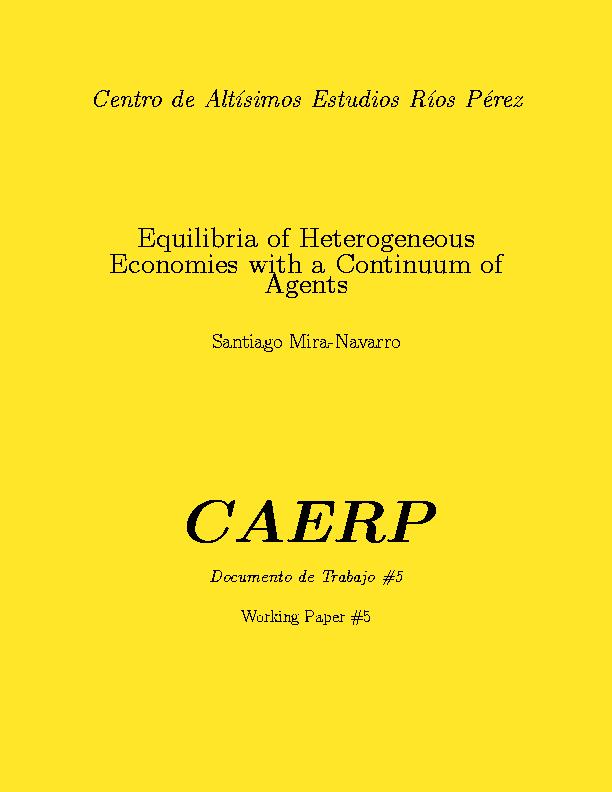
|
Documento de trabajo #5, 2003
|
The dynamic heterogeneous economies studied are described by a collection of heterogenous indi- viduals, their individual states and an aggregate state, such that the individuals' actions are given by the policy obtained from an optimization program and the aggregate law of motion is given by the aggregation of the individuals' actions. These economies have been used in computer simula- tions, however the analytical information about the equilibria of such economies is scarce and the classical approach of Stokey and Lucas with Prescott (1989) does not apply. This paper de nes the relevant concepts of equilibria and proves the existence of such equilibria using the Schauder Fixed Point Theorem. In order to apply Schauder's theorem, a metric for the space of operators between measures is provided, and the compactness of a speci c operator is proved. Moreover, the existence of a steady state for the aggregate state of the system is obtained through the Schauder-Tychonov Theorem. The results are related to models available in the literature.
|
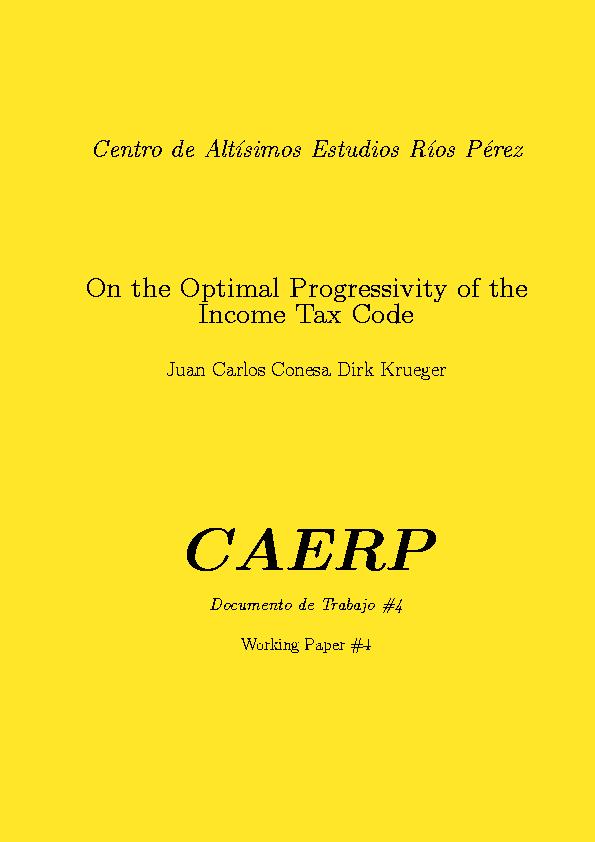
|
Documento de trabajo #4, 2003
|
This paper computes the optimal progressivity of the income tax code in
a dynamic general equilibrium model with household heterogeneity in which
uninsurable labor productivity risk gives rise to a nontrivial income and
wealth distribution. A progressive tax system serves as a partial
substitute for missing insurance markets and enhances an equal
distribution of economic welfare. These beneficial effects of a
progressive tax system have to be traded o¤ against the e¢ciency loss
arising from distorting endogenous labor supply and capital accumulation
decisions. A determination of the optimal progressivity of the income
tax code therefore calls for a quantitative exploration.
|
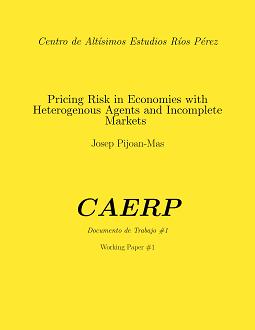
|
Documento de trabajo #3, 2003
|
Habit formation has been proposed as a possible solution for explaining the equity premium puzzle. This paper extends the class of models that support the habits explanation in order to account for heterogeneity in earnings, wealth, habits and consumption. I find that habit formation increases the equity premium. However, contrary to the earlier results in the literature, the habit hypothesis does not imply a price for risk much higher than the one implied by models with intertemporally separable preferences. The main reasons for this are general equilibrium ones. First, with just two assets available, households can smooth out consumption fluctuations very well. Therefore, the higher utility losses of uncertainty imposed by habits will not command a high price of risk because households manage to avoid this risk. Second, the composition of the set of agents pricing the assets is sensitive to changes in the model. In an economy with habits, pricing agents turn out to be households facing very small consumption fluctuations. In addition I characterize three important properties of the model economy that relate to portfolio choice: willingness to hold risky assets (1) increases with wealth, (2) decreases with labor earnings and (3) decreases with habit stock.
|
Documento de trabajo #2, 2003 |
A Quantitative Theory of Unsecured Consumer Credit with Risk of Default Satyajit Chatterjee Federal Reserve Bank of Philadelphia Dean Corbae University of Texas Makoto Nakajima University of Pennsylvania José Víctor Ríos Rull University of Pennsylvania and CAERP
We study, theoretically and quantitatively, the
equilibrium of an unsecured consumer credit industry where
credit-suppliers take deposits at a given interest rate
and offer loans to households via a menu of credit levels
and associated interest rates. The loan industry is
competitive, with free entry and zero costs, and
borrowers have a default option that resembles, in
process and consequence, a bankruptcy filing under
Chapter 7 of the U.S. Bankruptcy Code. We show
existence of a competitive equilibrium for such a loan
industry and we characterize when and if a household defaults on its
loans. We map the theory to the data in such
a way as to account precisely for the quantitative properties
of the facts regarding bankruptcy and unsecured credit (the
volume of unsecured debt, the fraction of borrowers in the
market, and the percentage of defaulters). We address
the implications of a policy change that eliminates the
Chapter 7 bankruptcy option for households with median
or above-median income (a proposal with similar
features is currently under consideration in
Congress). We find that the welfare gain from this
policy experiment is substantial, being equivalent to a
lump-sum transfer payment of about one-quarter of
average annual U.S. earnings.
|
|
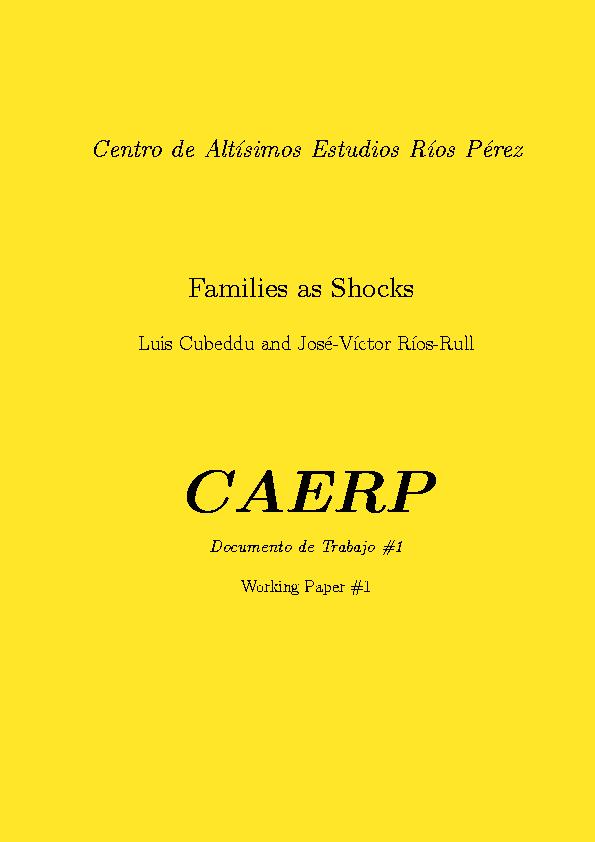
Documento de trabajo #1,
2003 |
Families as Shocks Luis Cubeddu (IMF) IMF José Víctor Ríos Rull University of Pennsylvania and CAERP
In this paper we show the quantitative importance of the
process that determines changes in family composition to
determine the main macroeconomic magnitudes. We do so by
modelling family type as a stochastic process that affects
households in a way similar to shocks to earnings. Agents
respond to these process by optimally choosing savings. We
show that the size of savings differs dramatically
depending on the details of the stochastic process. The
model is quantitative: its fundamental parameters are
estimated using U.S. data.
|
|
